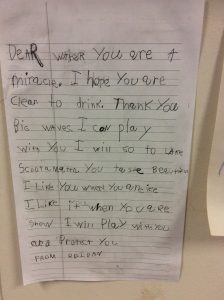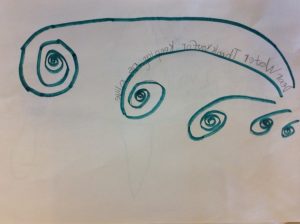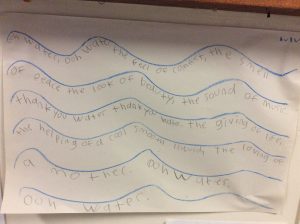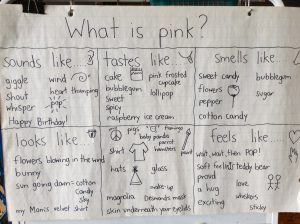April is National Poetry Month.
During this challenging year, poetry has supported critical and courageous conversations, offered some comfort and hope, while honouring pain and anger. Here are some examples of what this work has looked like and sounded like in our Grade 2 classroom:
Igniting the Spark: Amanda Gorman
The whole world was inspired by the poetry and brilliance of Amanda Gorman in January 2021. Her poem, “The Hill We Climb” filled us with light during this time of “never-ending shade”. Her story about overcoming a speech impairment reminded us all to believe in ourselves and find our voice. I shared her poem and her TEDTalk with my students, and she was the spark for our inquiry about the power and possibilities of poetry.
Power Poems for Small Humans:
I have reached for poems during difficult times when I could not find the words to express my feelings. Jillian Christmas is a Vancouver-based slam-poet, who is an organizer and activist in the arts community. I have shared her poem, “On Honouring Anger” in response to racial violence and injustice that continues to impact students, staff and families, and requires educators to take action.
This poem, and other powerful voices can be found in an anthology called “Power Poems for Small Humans”, published by Flamingo Rampant. Flamingo Rampant is a micro-press that publishes children’s books that center and celebrate stories of kids taking action, disability pride, 2SLGBTQ+ voices, racial justice and more. Please check out their website and bring their books into your classroom library!
Yesterday, I Had The Blues:
When we were learning remotely, I used the Poll feature on ZOOM to check-in with students. One day, the question was: “How are you feeling today? Choose a colour to describe how you are feeling.” Students were invited to analyse the data, and share why they chose the colour. Then, we talked about different ways that people experience colour. We listened to the story, “Yesterday, I Had the Blues” by Jeron Ashford Frame, and made text-to-self connections.
Next, we read selected poems from “Hailstones and Halibut Bones” by Mary O’Neill. I love this book, but it is important to preview the poems, because there is one poem that uses outdated language, and needs to be unpacked or revised. Each poem begins with the same question, (e.g. What is Orange?) and uses the five senses to describe colour in poetic ways. I created a graphic organizer, and students were invited to write their own Colour Poems.
Pink!
On the International Day of Pink, we had a discussion about how some people think that pink is a “girl’s colour.” We talked about where these ideas come from, and how these gender rules might make people feel excluded. We created a poster using post-it notes to capture our ideas, in the style of a JAMBoard. Then, we wrote our own “What is Pink?” poems and displayed them in the hallway.
Quick as a Cricket:
After reading, “Quick as a Cricket” by Audrey Wood, students wrote poems using the template, “I’m as ____________as a ___________.” This was a fun and accessible way to learn about the poetic device of similes. A simile compares two different things using “like” or “as” in an interesting or unexpected way.
Gratitude Poems:
After reading several poems from a collection called “ThankU: Poems of Gratitude”, we wrote our own “Dear Water,” poems. Students used the following sentence prompts to write a letter to our relative: “I love….I think….I will….I hope….You are….” On World Water Day, we read our letters to each other in the Rainbow Garden and talked about what we value, and how we might protect water.


Splish! Splash! Splat!
One rainy day, we brainstormed different sounds that water makes. Then, we learned about Concrete poems, which are poems that take the shape of the subject that they are describing. Students chose a shape and wrote a poem about water.


Respond and Rebuild:
We will continue to explore poetry, self-expression and identity by writing an “I am Me….” poem. This lesson plan is from www.welcomingschools.org and can also be found in ETFO’s newest resource, Respond and Rebuild CRRP Lesson Plans. I am looking forward to integrating movement and choral reading to this work.
What are your favourite poems or poets to explore in the classroom?


